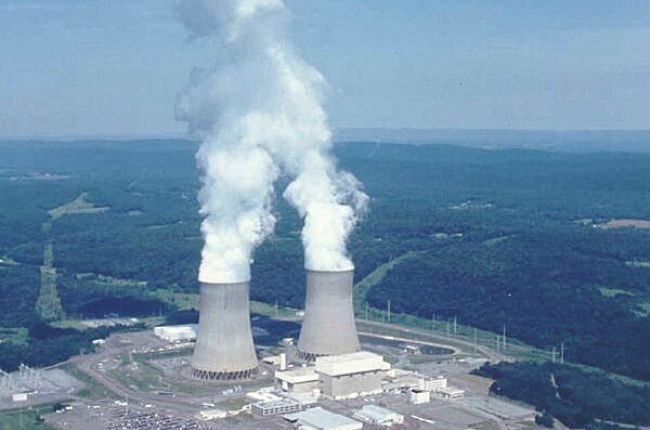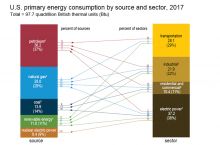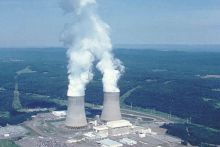
Energy Information Administration FAQs:
"As of December 3, 2018, there were 98 operating nuclear reactors at 61 nuclear power plants in the United States. The R. E. Ginna Nuclear Power Plant in New York is the smallest nuclear power plant in the United States, and it has one reactor with an electricity generating capacity1 of 582 megawatts (MW). The Palo Verde nuclear power plant in Arizona is the largest nuclear power plant in the United states with three reactors and a total electricity generating capacity1 of about 3,937 MW.
The amount of electricity that a power plant generates over a period of time depends on the amount of time it operates at a specific capacity. For example, if the R. E. Ginna reactor operates at 582 MW capacity for 24 hours, it will generate 13,968 megawatthours (MWh). If the reactor generated that amount of electricity every day of the year, it would generate 5,098,320 MWh. However, most power plants do not operate a full capacity every hour of every day of the year. In 2017, the R. E. Ginna nuclear power plant actually generated 4,697,675 MWh.
Nuclear power reactors generally operate at or near their rated generating capacity throughout the year and have relatively high annual capacity factors."
1Net Summer capacity
Learn More:
- Energy Explained: U.S. Nuclear Industry (Webpage), Energy Information Administration
Overview of the U.S. nuclear power industry, including nuclear power generation over time, recent and future changes to U.S. nuclear power plants, and national distribution of nuclear power
- Energy Explained: Nuclear Power Plants Basics (Webpage), Energy Information Administration
Basic information about how nuclear power works
- Operating Nuclear Power Reactors (by Location or Name) (Interactive Map), Nuclear Regulatory Commission
Map showing the distribution of active nuclear reactors in the U.S.
- U.S. Nuclear Generation and Generating Capacity (Data), Energy Information Administration
Information and data on nuclear power generation by state and reactor



